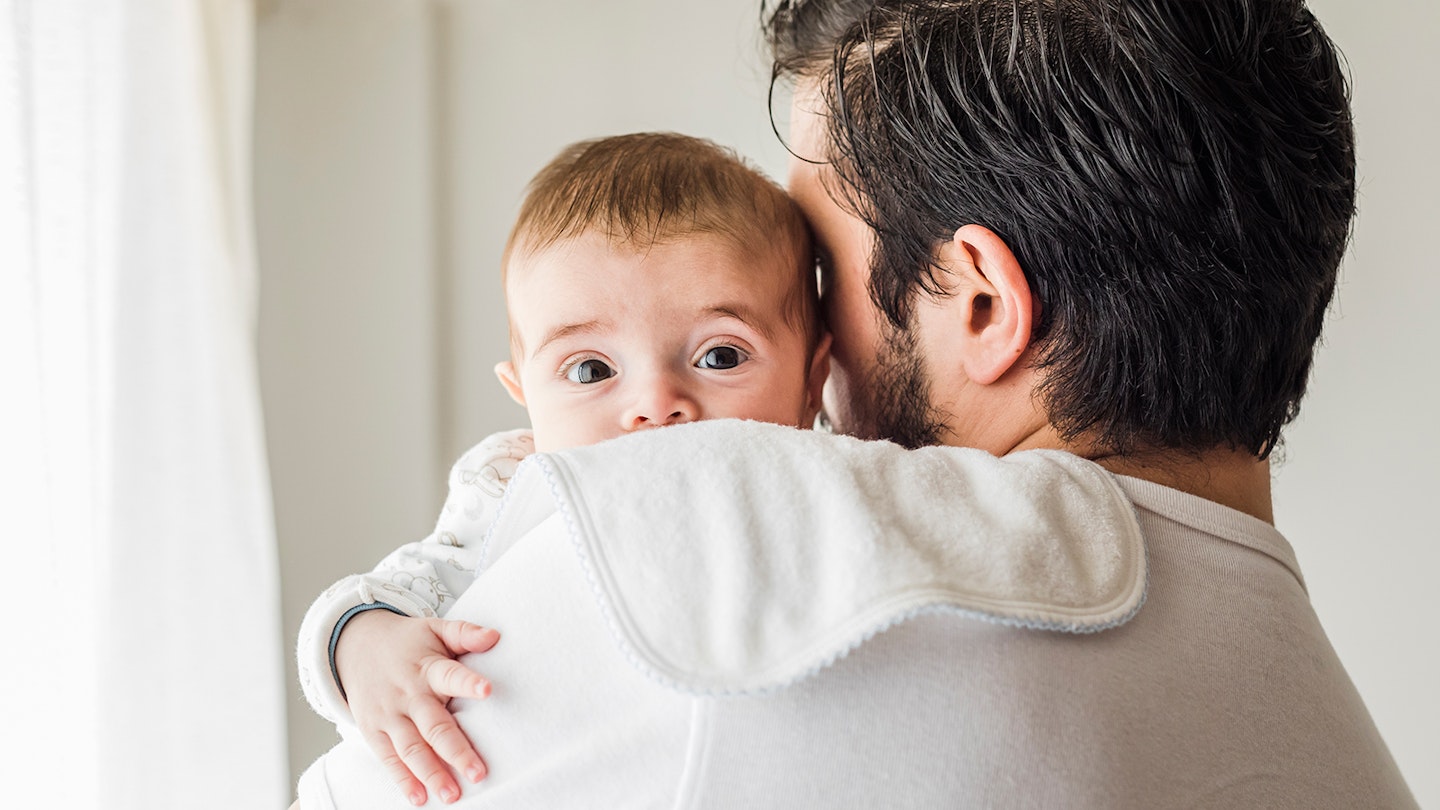From newborn diarrhoea to tummy troubles, your baby’s digestive system can give you endless worries in the early days and you'll no doubt want to steer clear of any issues when you can. That's why it's so important to remember to burp your baby when necessarily.
Why wind your baby?
Burping your baby is a vital part of your child's feeding routine. Wind is caused by excess air getting trapped in the tummy and often occurs when your baby accidentally swallows mouthfuls of air when feeding or gulps it in while crying. This can make baby feel full even if they haven’t had enough to eat.
If your baby gets air trapped in their tummy, they’ll feel uncomfortable and unable to settle and every mum knows a windy baby is a grumpy baby. The good news is that you can avoid the tears by finding the right baby burping technique to settle your little one.
"For some babies, wind can be incredibly painful and upsetting," says parenting expert Fi Star-Stone. "It can take time and patience to soothe them and dislodge the wind, but after every feed, you should ensure you get 3-4 big burps. You can do this in several ways but it's really about finding out what works for you and your baby."
Burping your baby can also help to relieve hiccups too.
Symptoms of trapped wind
Common signs your baby has trapped wind include:
• Crying
• Squirming
• Pulling their legs up towards their tummy
• Clenching their fists
How to wind your baby:
There are several different ways to wind your little one. Get the technique right and it could provide instant relief for them….
 1 of 6
1 of 61) The classic rub
Sit your baby on your lap facing to the side or facing forward. Support your baby with one arm under their tummy and your hand supporting their chin. Lean baby forward slightly and rub their back up and down quite quickly with your free hand.
 2 of 6
2 of 62) Pat a back
Gently pat your baby's back while they are sitting in the position mentioned above. "Patting can help to dislodge stubborn wind," says Fi. "But be careful not to pat your baby too hard!"
 3 of 6
3 of 63) The arm lift
"One of the best ways of helping my little ones stubborn wind was to lift them gently under their arms then gently rock them side to side," Fi suggests. Make sure you’re careful to support your baby's head though.
 4 of 6
4 of 64) Tummy-time burping
Lay your baby tummy-down on your lap supporting their head with your hand.
"Ensure baby is safe and secure and not in danger of rolling off your lap – then use your free hand to rub their back gently up and down or in circular motions," says Fi.
"Lots of little ones like this technique but be warned – it can bring up a sicky burp after a feed as there is pressure on their tummy."
 5 of 6
5 of 65) Baby massage
Massage is a great baby calmer and can help your bond to grow stronger. What’s more, it’s pretty easy once you know what to do. Your newborn will be in the mood for a massage around 45 minutes after a nap and feed.
As you build confidence, try ‘soothing strokes’, where you move your hands from just above baby's belly button towards their hips, one after the other, to help move wind through the bowel.
Fi says, "A baby massage is a great way of soothing your little one and dislodging their wind.
"Some medicines, like Infacol or gripe water are also hugely helpful if given to your baby before a feed. It helps your little one bring up their wind by making their wind bubbles bigger and therefore easier to pass."
 6 of 6
6 of 66) Baby still uncomfortable?
"If your little one’s stubborn wind is still leaving you wanting to tear your hair out, there are plenty of other tricks you can try."
"Elevating the head end of the cot when putting your baby down for a nap after a feed can really help windy babies," says Fi.
"Winding during, as opposed to after, a feed (especially for bottle-fed babies) can help as well.
"Sit them upright half way through a feed and try to burp them, then continue to feed. If you are bottle feeding – try to use anti-colic bottles."
Preventing trapped wind
Breastfed babies are less prone to trapped wind because they have greater control over milk flow but baby may still suffer if they feed quickly or your milk is fast-flowing.
To reduce the chances of wind when bottle feeding, keep your baby in an upright position as they drink. Tilt the bottle so the milk completely covers the hole too – this will help prevent any air from getting in.
If your baby’s feeding well and seems happy, don’t stop to wind them – they might get upset and gulp in air as they cry. Wait for a natural break to try. It’s useful to gently stretch your baby out when winding.
Good positions to adopt include holding baby over your shoulder with their bottom supported, sitting them upright or laying them face down on your lap.

Meet the expert: Fi Star-Stone is a qualified parenting advisor with over 25 years working with children and families. Her qualifications include a Degree in Childhood and Youth studies, an NNEB in Nursery nursing, and a Diploma in Childhood studies. Her bestselling book ‘The Baby Bedtime Book’ has been helping families to give their little ones the gift of happy sleep.
